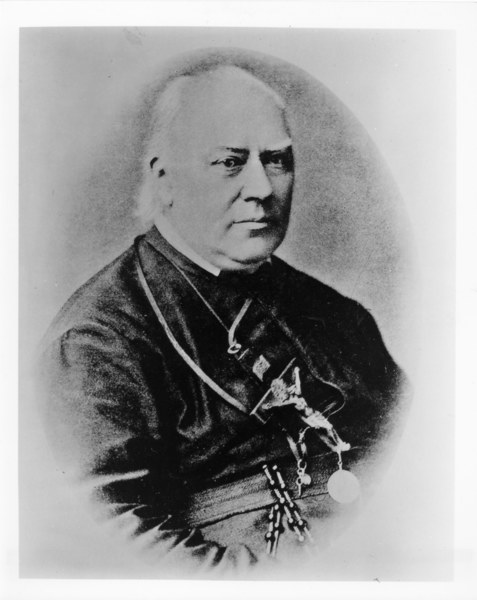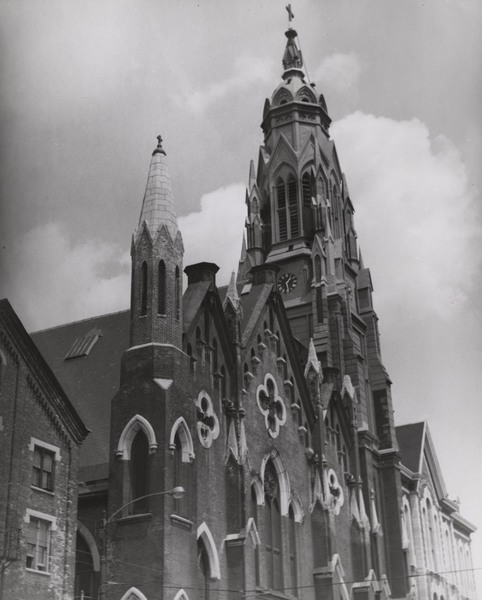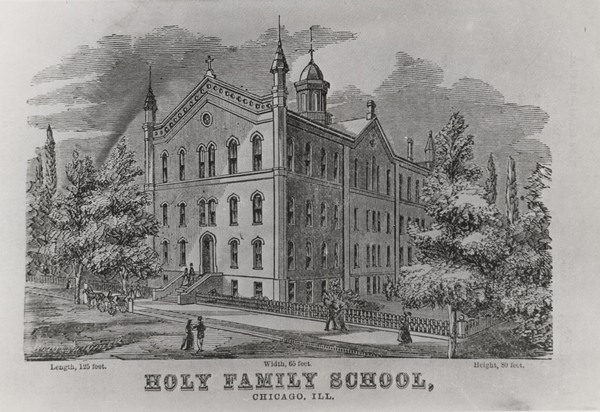Damen Comes to Chicago
In 1856, Chicago Bishop Anthony O’Regan invited the Jesuits of St. Louis to conduct missions in the city. Fr. Damen impressed the bishop so much that he requested Damen be assigned to Chicago permanently. Fr. Damen moved to Chicago on May 4, 1857, where he founded Holy Family Parish on the city’s near west side. At the time, the west side of the city was still unsettled prairie, but it quickly filled with people attracted to Fr. Damen’s work. His messages particularly resonated with European immigrants moving to the city.
In 1860, Holy Family Parish built a permanent structure at Roosevelt Road and May Street. During construction, Fr. Damen uplifted many immigrant artists by hiring them to craft the altar and other pieces of art to decorate and furnish the church. Typically, these immigrant artists had to perform menial labor tasks in order to make enough money to survive, but Fr. Damen gave them the opportunity to practice their skills.
In August 1863, Fr. Damen opened up a girls’ school, and in early September 1863, he opened a boys’ school. Both schools initially met in Holy Family Church, but they soon grew to over 1,000 students each. To meet the needs of the community, the parish built Holy Family School in 1865. Two years later, Fr. Damen invited the Sisters of Charity of the Blessed Virgin Mary (BVM) to open St. Aloysius school within the parish.




